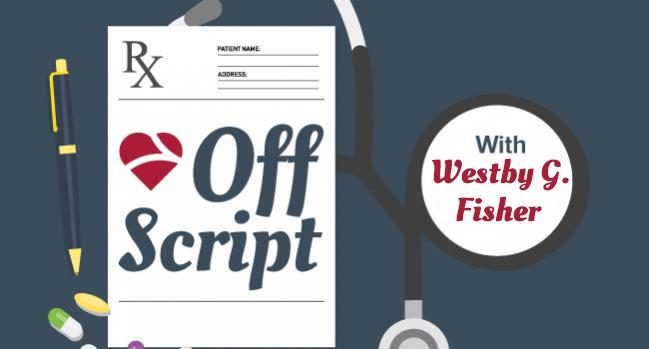A New Cardiovascular Board? A Few Things For Cardiology Leaders to Consider
For years he’s been a thorn in the side of the ABIM. Now he has some words of advice for those devising a cardiology alternative.

Amid renewed uproar on social media regarding American Board of Internal Medicine (ABIM) Maintenance of Certification (MOC), several cardiology subspecialty societies announced that they were planning to create their own “cardiology board.” As an internist triple ABIM-board-certified since 1989 in internal medicine, cardiovascular disease, and cardiac electrophysiology, I’ve experienced the effects of time-limited certification directly. I hope, by shedding some light on the history of how this time-limited approach came to be and why it is problematic, our new cardiology board will not make the same mistakes.
Until January 1, 1990, ABIM board certification was a truly voluntary credential earned at the conclusion of one’s residency to prove to our ourselves and our colleagues that we knew enough to practice independently as cardiology specialists—not too different from a lawyer passing his bar exam to practice law. We paid a nominal fee to take a test, and if we passed, we were deemed cardiologists for the rest of our careers in medicine. Ongoing continuous professional development (CPD) credits were earned by participating in accredited continuing medical education (CME) or by attending scientific sessions or courses on an ongoing basis to maintain our state licensure as physicians.
Beginning in the late 1970s and early 1980s, the ABIM reorganized and created new paid officer positions. Since lifetime board certification (a “one-and-done” process) would not support the long-term viability of ABIM and their paid positions, new sources of revenue were required. Initially, voluntary retesting of internists to gain another professional accolade had declining enrollment. The ABIM convened a “Task Force of Recertification” to publish a sentinel opinion piece in the Annals of Internal Medicine to justify the establishment of time-limited certificates. In that paper, they claimed that there was a “rising tide of public concern over the need to recredential physicians” and “time-limited certification and recertification seem to be [emphasis mine] obligations of an accountable profession.” With that publication, all physicians who received their ABIM board certifications after 1989 were only issued time-limited board certificates lasting 10 years, while those issued prior to that time never expired. Richard Baron, MD, outgoing president and CEO of the ABIM, has since acknowledged that this was a purely “political decision” by the group. Yet the discrimination against younger, more vulnerable physicians, many of whom are of lower economic status, female gender, and people of color, persists. No objective data—with no ties to the ABIM—of improved patient care have ever been provided for this change.
Significant conflicts of interest exist within the ABIM today. First, they are unelected and self-appointed. Secondly, only two physicians have led the organization over the last 20 years, Christine Cassel, MD, and Baron. Both Drs. Cassel and Baron have had ties to the National Quality Forum in Washington, DC. Around the time Cassel was accepting a position as head of the National Quality Forum in 2009 after leaving ABIM, it was reported by ProPublica that, unbeknownst to ABIM diplomates, she had been receiving payments from the Kaiser Foundation Health Plans and Hospitals and payments and stock from Premier, Inc, a company that provides group purchasing and performance improvement consulting for an alliance of 2,900 hospitals and thousands of nursing homes. At the time, the Quality Forum was reviewing its conflict-of-interest policies after the former co-chair of its endorsement committee had just settled a $40 million whistleblower lawsuit with the US Department of Justice for accepting kickbacks to help a drugmaker win favorable treatment. The conflicts of the ABIM in this area have never been reviewed. In fact, the bylaws of ABIM last published in 1998 state (Section 9.5) that the “Board may accept gifts, grants, devices, or bequests of funds or any property from any public or governmental body or private person, including private and public foundations, corporations and individuals, for its corporate purposes.”
Finally, and most importantly, the ABIM and all other member boards of the American Board of Medical Specialties (ABMS) feed our certification data to ABMS, who then sells that data to third parties via ABMS Solutions, LLC, a for-profit subsidiary based in Atlanta, GA. To assure an unlimited source of funds, ABMS Maintenance of Certification was added to the Affordable Care Act of 2010 as a “quality registry” using undisclosed lobbying techniques. Thanks to those efforts, ABMS board certification is no longer voluntary. Using the ABMS Solutions database, physicians’ failure to pay recertification fees or perform tasks required by any ABMS member boards are shared daily with third parties (like insurers) and used to deny payments to physicians, which ultimately limits patients’ access to care. As such, the physician degree is also rendered time-limited because hospital privileges can also be revoked for not “keeping current.”
If a new cardiology board is to succeed where the ABIM has failed it must first rectify the problems and conflicts of interest inherent to time-limited ABMS board certification. Fortunately, the leadership have an opportunity to construct a transparent and meaningful continuing professional development pathway for working US cardiologists that avoids the conflicts and harms caused by time-limited certification to physicians and patients alike.
- End the Discrimination of Time-Limited ABMS Board Certification: Either everyone performs the program, or no one does. To this end, serious consideration should be given to reverting to reinstating initial lifetime board certification for cardiologists and reverting to ACCME-accredited CME credits earned annually. Credit could be given for any number of patient-centered skills, like participation at scientific sessions, authoring peer-reviewed journals, learning new skills, and clinical productivity, as tracked by the American College of Cardiology’s NCDR database registry.
- Admit the Conflicts of Interest Inherent to Time-Limited Certification and Deal With Them: Physicians should not have to be allowed to practice medicine only based on timed quizzes of uncertain benefit to patient safety and care quality. Infantilizing physicians by establishing unimportant task completion and certain monetary collections is unproductive, wasteful, and leads to burnout. Strongman tactics to force participation are especially unacceptable, particularly when the new cardiology board will have no idea of the scope and extent of each physicians’ contributions to their patients’ care and practice setting. Allow doctors to choose what educational needs their patients need and provide those instead. Time-limited certification never taught me how to place an LV lead, safely install a leadless pacemaker, perform a fluoroless atrial fibrillation ablation, or insert a conduction system pacing lead.
- First Avoid Harm to Patients and End the Regulatory Capture of Physicians: Patients need physician care. Restricting a physician’s ability to treat their patients thoughtfully and safely because of unproven metrics and payment to ABMS member boards is harmful to patients and their doctors. Until repeated tasks such as quiz-taking are proven to improve patient care or care safety, they should end. If initial certification data-sharing or continuing education metrics are to be performed with third parties, physicians must be able to opt out of the practice without harming their ability to hold hospital privileges or receive insurance payments. Local physician competency issues must be managed by elected state medical boards and not unaccountable nonprofits.
- Stop the Rising Costs of Time-Limited Certification: An analysis of MOC in 2015 estimated its cost as $5.7 billion over 10 years, $1.2 billion more than the 2013 MOC. This includes $5.1 billion in time costs (resulting from 32.7 million physician-hours spent on MOC) and $561 million in testing costs. While it will be hard for the new cardiology board to forgo forced payments for CPD products, there is a desire for them to maintain state licensure. Strongarming payment of MOC fees before a newly initiated board-certified cardiologist can see the board examination scores they just paid for (which is how things work now) is not in keeping with assuring quality or safety of patient care and only works to devalue the credential.
These requirements will not be easy to implement for the new cardiology board, especially since their announcement suggested they must kowtow to the ABMS for approval. But only by reviewing the history of time-limited certification and resolving its ongoing conflicts of interest can ABMS board certification gain the respect and credibility it once held among physicians and truly improve the safety and care of our patients.
Off Script is a first-person blog written by leading voices in the field of cardiology. It does not reflect the editorial position of TCTMD. Views expressed herein are Dr. Fisher’s own and do not represent those of NorthShore University Health System, University of Chicago, or Practicing Physicians of America.
Westby G. Fisher, MD, is a cardiac electrophysiologist at NorthShore University HealthSystem in Evanston, IL, and clinical associate professor of…
Read Full Bio

Comments